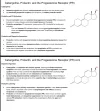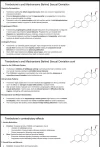Sure bro, this will be important for many.
Before we embark on the to-and-fro of the next few messages, I need you to know that: (a) what you're doing is a primordial form of what future work *will* indeed look like, so do practice; and (b) you _are_ right to be paying attention, and learning these tools now for an edge.
But also,
(c) I have historically derided the embrace meets overreliance on these tools, because (d) I myself went to school during a time when we weren't *allowed* to use calculators until calculus, and even then, we'd have inspections in the `APP/PRGM` of our TI graphing calculators for cheating. I believe firmly that the shortcuts that these tools make possible will also risk at least a substantial regression towards a pre-Enlightenment psyche in the medium-term. But, I digress.
So, the problem with ChatGPT in its current form is that it has been fed almost the entirety of the digitized data in existence without anywhere *close* to having commensurate, adequate investments made into even knowing where to *begin* to understand /how/ to robustly assess validity and/or weigh reliability of its own utterances across disciplines with contextually and granularity.
The emphasis by managing software engineers to date has been totally towards developing these AI interfaces' natural language abilities, to smoothly handle queries, and indeed, to exude confidence [never actually weighing their own uncertainty, not to mind, communicating that to us].
I reiterate that these tools have by now been practically fed the entire compendium of human knowledge, from rote sources of course, vis-à-vis digitized medium, *en masse*.
That would be a net benefit but for the fact that even the developers themselves admit openly to failing to understand how LLMs work beyond the basic schema, not to mind, how a prompt is evaluated from input.
I want to now move on to giving an abbreviated analysis of some of the concerns that were raised as I read through these pages.
First, and foremost:
1. There are NO (!) citations given throughout the pages of this document. Not a one!
Therefore, it is impossible to assess the reliability or validity of any conclusions drawn, and so these exist merely as a creative, albeit scintillating, presentation of conclusory remarks replete with 2D chemical molecules formed by a large-language model.
2. You have not even treated us to YOUR actual queries, or prompts.
Besides the opacity of this, that is immediately striking. The fact of the matter is that we the readers have no clue how you actually directed the output of this AI tool.
Which AI tool is it? Start there.
For anyone to be able to weigh the validity of your presentation here, you'll need to painstakingly _cite_ your prompts. I recommend NLM9, the standard.
Of course, even I make some use of AI tools in 2025. I have a whole *lot* of the citations in my own notes of this form, despite only resorting to AI in edge circumstances.
For you, I might suggest such a cite would include something along the lines of:
"Compare the anabolic effects and side effect profiles of SARMs vs trenbolone" prompt. ChatGPT, 22 June version, OpenAI, Aug 1 2024, chat.openai.com/chat.
The rationale for my telling you this is simply that without knowing these, this document is essentially a purely creative endeavor where you have bounced your own preconceived notions off the bot, and generated some slick SVGs. Whether you meant that or not, that's all it _can_ be.
Let's finally discuss those responses to your queries that I found most curious and/or concerning. This impression was not in short supply, but for brevity's sake, let's choose two:
First, take Image 1: Heading: Cabergoline, Prolactin, and the Progesterone Receptor (PR):
Cabergoline:
.... basic facts about the drug as a dopaminergic agent that acts at D2 receptors to inhibit prolactin release
Prolactin and PR activation:
More basic facts about prolactin/progesterone interactions, that I have written about without any AI influence as it relates to bodybuilding here
Introduction
Prolactin: Protein (peptide hormone; 227 AA, ~26 kDa) encoded by the PRL gene that primarily acts on the mammary gland to promote lactation
Progesterone: Female sex steroid hormone (C21-steroid, 20-oxo steroid, 3-oxo-Delta(4)) that primarily acts to maintain pregnancy & decrease uterine contractility
Of chief concern to this audience are the progestins (progesterone analogues), and specifically the subset of progestins that may be classified as progestagenic androgens (e.g., Nandrolone, Trenbolone, MENT): these are androgens that have affinity for the...
Probably, in fact, before it existed even in its most primitive form.
... Prolactin and Dopamine Interaction, Dopamine Agonism, Prolactin Lowering by Cabergoline...
But what isn't mentioned even once is the fact that trenbolone does not increase prolactin, but rather decreases it, if anything, albeit with only some significance. The sensitizitation to estrogens, e.g., by trenbolone, are fully documented, and advice given, in the article above that I just hacked together for the benefit of Meso in a couple hours, with citations.
My, second-most concerned, albeit closely ranked and with plenty behind, impressions came from the second attached image here, "Trenbolone's SARM effects at lower dosages 1/2 and 2/2 "(cont.)" that takes up more than its fair share of real estate in this (scintillating! nicely edited) set of slides:
This concern is particularly striking since these two verbose pages truly "strut" between two polarized states, being either:
(a) too narrowly based on a single, discordant, outlier study, or
(b) too broadly based on mere user surmise or conjecture (surely to an extent influenced by subconscious or third-party factors, e.g., Victor Black promulgates this paper), rooted in assumptions that trenbolone's purported SARM-like quality is actually be so.
What post of mine would be complete without at least assessing this study of record, Yarrow, Joshua F., et al. “Tissue Selectivity and Potential Clinical Applications of Trenbolone (17β-Hydroxyestra-4,9,11-Trien-3-One): A Potent Anabolic Steroid with Reduced Androgenic and Estrogenic Activity.” Steroids, vol. 75, no. 6, June 2010, pp. 377–89. DOI.org (Crossref),
Redirecting
It's the only study among the literature that suggests that trenbolone, of all the androgens among those to choose, bears any resemblance whatsoever to selective androgen receptor modulator (SARM), those classical qunolinone analogs; aryl propionamide analogs; bicyclic hydantion analogs; tetrahydro-quinoline analogs; characteristic partial agonism and Nad⁺ Hydrolase Sarm1 activity; perhaps some MSTN antagonism - that the product of this AI tool even producing it is something that immediately hazards a closer scrutiny.
This is because in fact trenbolone is a ***most*** potent triene (Δ4,9,11) that so *totally* activates the AR that its action is like a sharpened blade slicing into the receptor. *Tissue*-selectivity, i.e., a result of autocrine/paracrine IGF-I activity in skeletal muscle, is quite apart from AR selectivity, that relates to modes of binding foremost.
On its face, the apparent overreliance, or overpromotion by the user, of this outlier study's conclusory remarks rings an alarm bell of sorts, not the least because it has been recently been so transparently seized upon and bandied about by an aggressive self-promoter in the bodybuilding world named Victor Black.
This kind of presentation, pretty as it is, would be so much more compelling if it was simply a single-page bolstering of the Yarrow study above, written in your own word's, and argued impassionately.
In conclusion, I like the formatting, design, and support the limited application of well-designed prompts to get a hypothesis or initial model for yourself to continue to unravel. But this, standing alone, is, while creative and appealing at first-glance with its models and professional layout, totally devoid of the kernel of fact that, in fact, could have been expressed in a paragraph tops, with some reading and focus on a cognizable point, and backed up by data.



